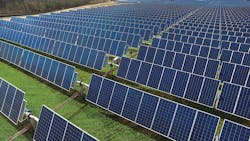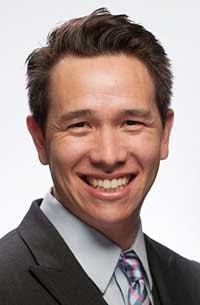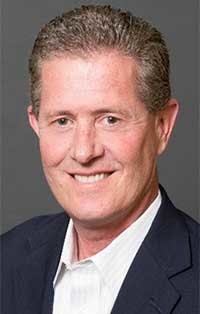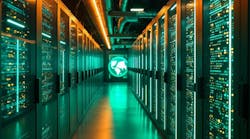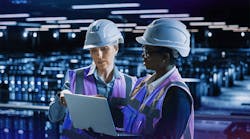Data Center Sustainability Comes to the Fore (Even More) in 2023
Sustainability will be more important than ever in 2023, according to our DCF Executive Roundtable panel, who say the data center sector must be a key player in addressing the climate crisis. but it will require action, commitment and the ability to navigate a complex landscape of opportunities, challenges and tradeoffs.
Our panelists include Peter Panfil from Vertiv, Phillip Marangella of EdgeConneX, Schneider Electric's Frank Nash, Shannon Hulbert of Opus Interactive, NTT Global Data Centers' Steven Lim, and Eric Boonstra of Iron Mountain Data Centers. The conversation is moderated by Rich Miller, the founder and editor of Data Center Frontier. Here’s today’s discussion:
Data Center Frontier: What will be the important themes in sustainability in 2023 for data centers and cloud operators?
It’s only natural – and prudent – for governments to apply more scrutiny to any industry with that level of resource consumption. Already, in places like Singapore and Ireland, new data center construction is subject to government review and requires compliance with stringent environmental criteria. So, whether data center operators work to reduce their energy consumption and carbon footprint in an effort to address the ongoing climate crisis or they do so to meet anticipated regulatory requirements, the result is the same – sustainability is built into everything they do.
What does that look like in 2023? Let’s start with the low-hanging fruit: High-efficiency power and cooling solutions become a priority, and overlooked efficiency features, such as Dynamic On-Line Mode, will be employed more liberally. New builds are likely to prioritize water-free designs and low-GWP refrigerants. Organizations will embrace modular designs and systems to reduce waste and better match capacity to demand.
We could also see more aggressive decarbonization efforts, including a push to explore alternatives to using diesel. Diesel is a major hurdle to operating carbon free. The industry is looking for other options for extended backup power, including relying on batteries for longer runtimes. Hydrogen fuel cell technologies are evolving and becoming more mature, and we could see fuel cells used as continuous duty batteries as early as 2023.
One last thing on sustainability: This is a difficult subject for the data center industry. Data centers provide immeasurable service to the world and the growth of the industry is unquestionably beneficial, but it’s also true that continued growth creates challenges in terms of energy and water use. We are proud of the proactive steps the industry continues to take to address those challenges, and we look forward to working with our customers and other industry leaders to continue to do everything we can to build a better, more sustainable data center ecosystem going forward.
The cloud and colocation industry has been a key driver of progress through encouraging renewable investment and ‘greening the grid’ along the way.
Despite great progress, we still have a long way to go as an industry and for us in 2023, further implementing our commitment to 100% clean electricity,100 percent of the time in all our data centers by 2040 through 24/7 clean energy tracking is the main point of focus.
For the industry as a whole sustainability can only be improved through collaboration across the industry and with governments and standards organizations. So ongoing efforts in improving collaboration and legislation, next to making everybody in the industry aware that we can be part of the solution instead of the problem as ‘’we are in this together’’ must continue to be repeated.
NTT has made significant climate and sustainability commitments, and our data centers are obviously a large part of that. I don’t believe there are any consistent themes yet with regards to the data center and sustainability, but I think there are several areas of focus that seem to be emerging.
First and foremost is a move to denser environments and new corresponding cooling solutions such as submerging chips and computers in liquid. We also continue to look at alternatives for back-up systems such as moving from diesel to HVO in all of our generators.
Finally, we are working with power providers in all of our markets to uncover ways to develop green energy and move to completely renewable power sources. While all of these represent parts of the larger story, it remains to be seen what broader trends will drive adoption across our industry.
In addition, it’s important to note that there is an important interplay between data center providers and customers when it comes to sustainability. The best, most efficient, most planet-friendly data center in the world won’t operate as effectively if they aren’t connected to the cleanest available energy sources or if waste, water, and emissions are not minimized at every step of the operations process.
A lot of these decisions are ultimately made by the customers of a data center and over time it will be incumbent on customers to factor in the cost-benefit analysis that drives some economic decision-making.
Data center operators are facing external conditions that they may not have counted on when designing existing data centers, and that are constraining the design and location of new ones. The industry is looking for new solutions that will make it more resilient to the effects of climate change.
Increasingly, data center operators are being forced to contend with the effects of climate change even as they work to fight it. Water scarcity is a good example of this. Currently, data center operators have trouble siting new facilities in areas where there is competition for water resources. Arizona is a hotspot for data center development, and municipalities there are passing ordinances that allow them to turn down requests for water withdrawals if they don’t feel that they’re aligned with local priorities.
We’re seeing the same thing worldwide as local communities become more protective over their water resources. Data center operators need to look at how drought is affecting power availability in the areas where they are building. Water is a key element throughout our energy system, and when we are dealing with drought, our ability to produce energy gets squeezed in a hundred different ways. Our customers tell us that power availability has become a major driver for data center placement, and the industry needs to track how drought may affect this.
Extreme heat and severe weather have similarly presented increasing challenges to the design, location, and operation of data centers, and the threat is likely to continue to grow in the near future.
Data center operators need to convince their host communities and countries that they are part of the solution -- and not just competitors for scarce energy resources. We believe that a new, cleaner, and more resilient energy system is possible, and digitization will be at the heart of it. All digital solutions, of course, run through data centers.
Shannon Hulbert, Opus Interactive: Availability, cost, and long term reliability are driving demand for energy-efficiency and investment in renewables and innovative energy solutions. I think this trend will become part of the fabric of the way the industry delivers both power and water. Save energy/water, save costs.
Micro grids and energy optimization isn’t a want-to-have for some organizations to differentiate, it’s the norm to meet reliability and cost requirements.
NEXT: A recap of our DCF Executive Roundtable, with links to all articles and the insights and full transcripts of commentary by our six industry experts..
Keep pace with the fact-moving world of data centers and cloud computing by following us on Twitter and Facebook, connecting with DCF on LinkedIn, and signing up for our weekly newspaper using the form below:
About the Author

